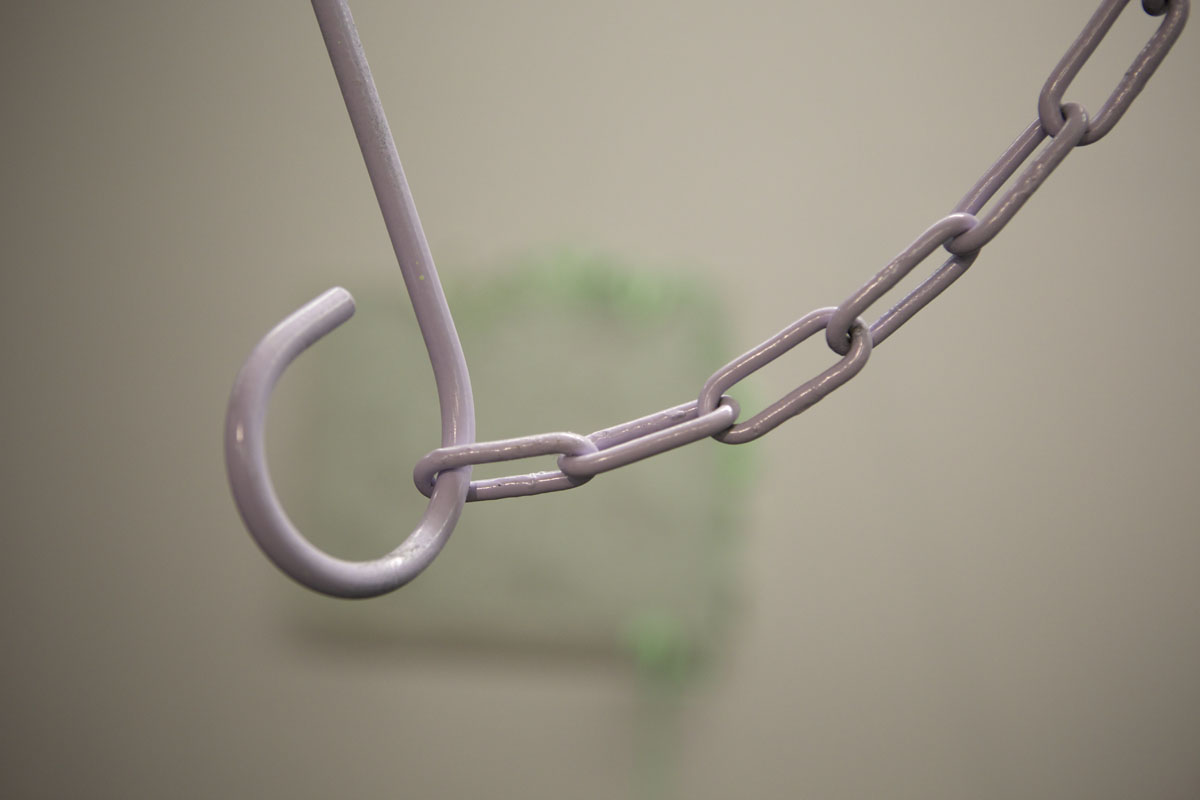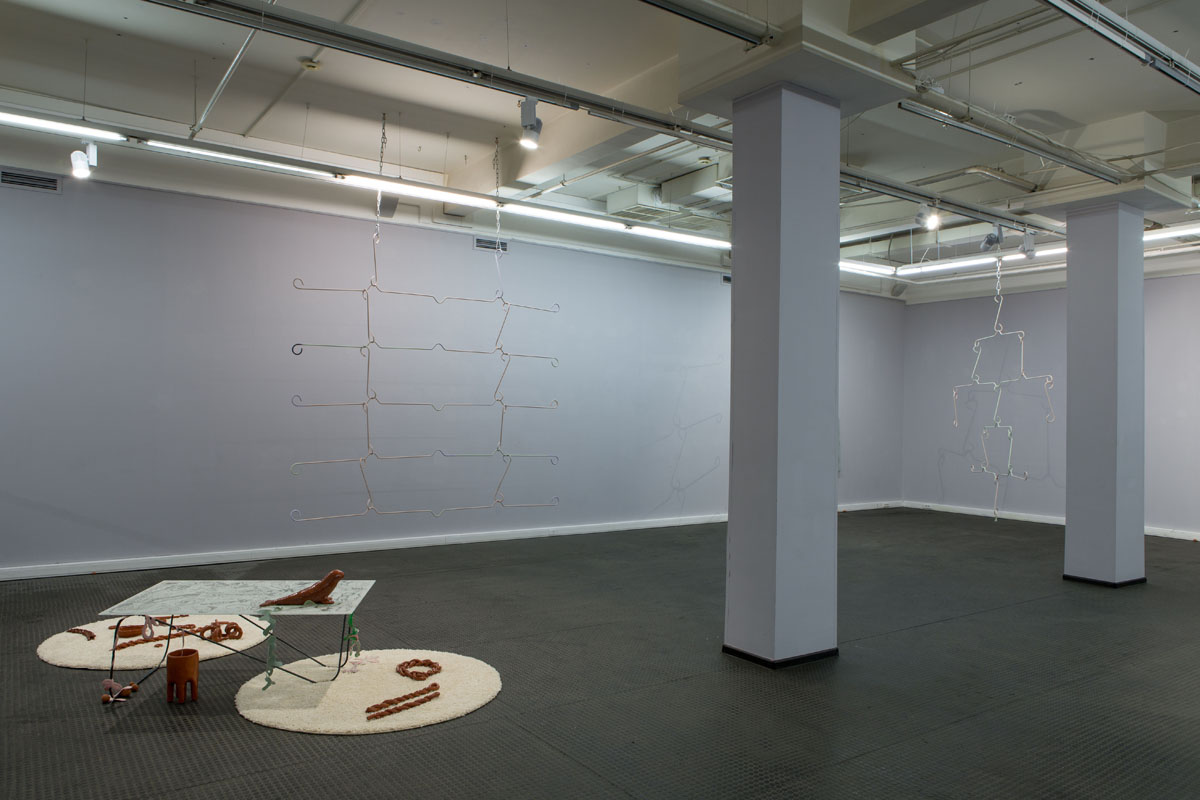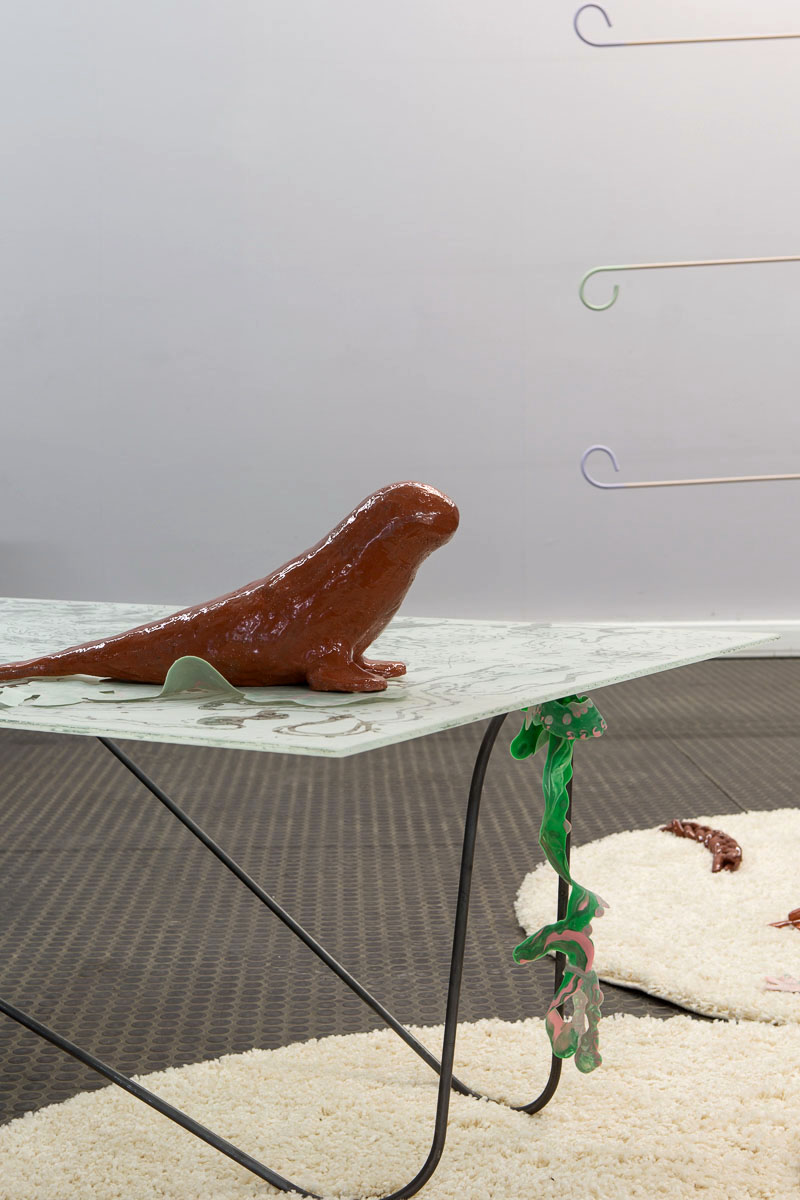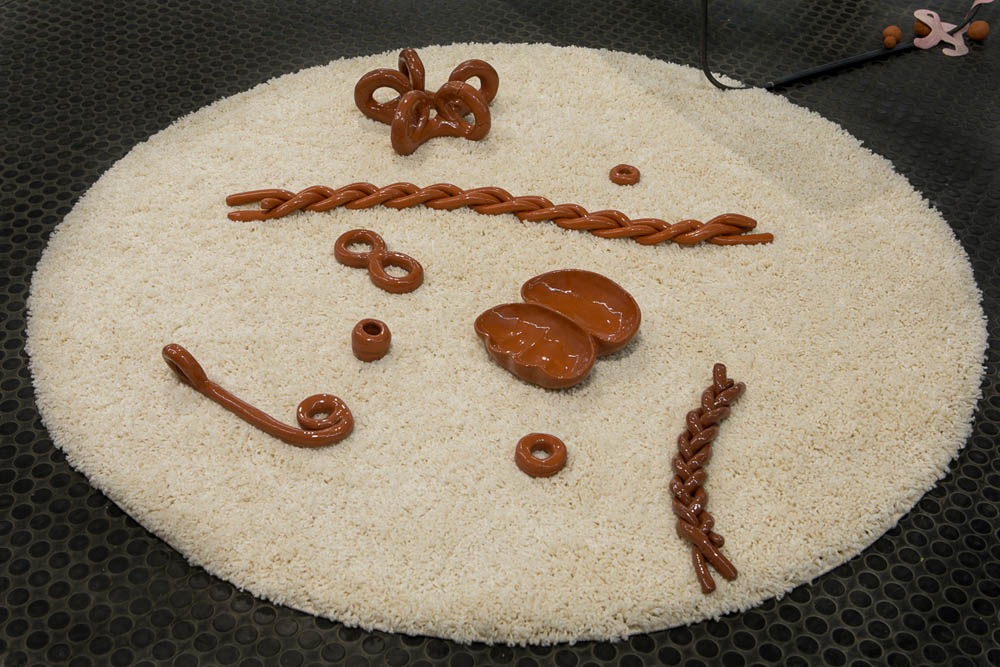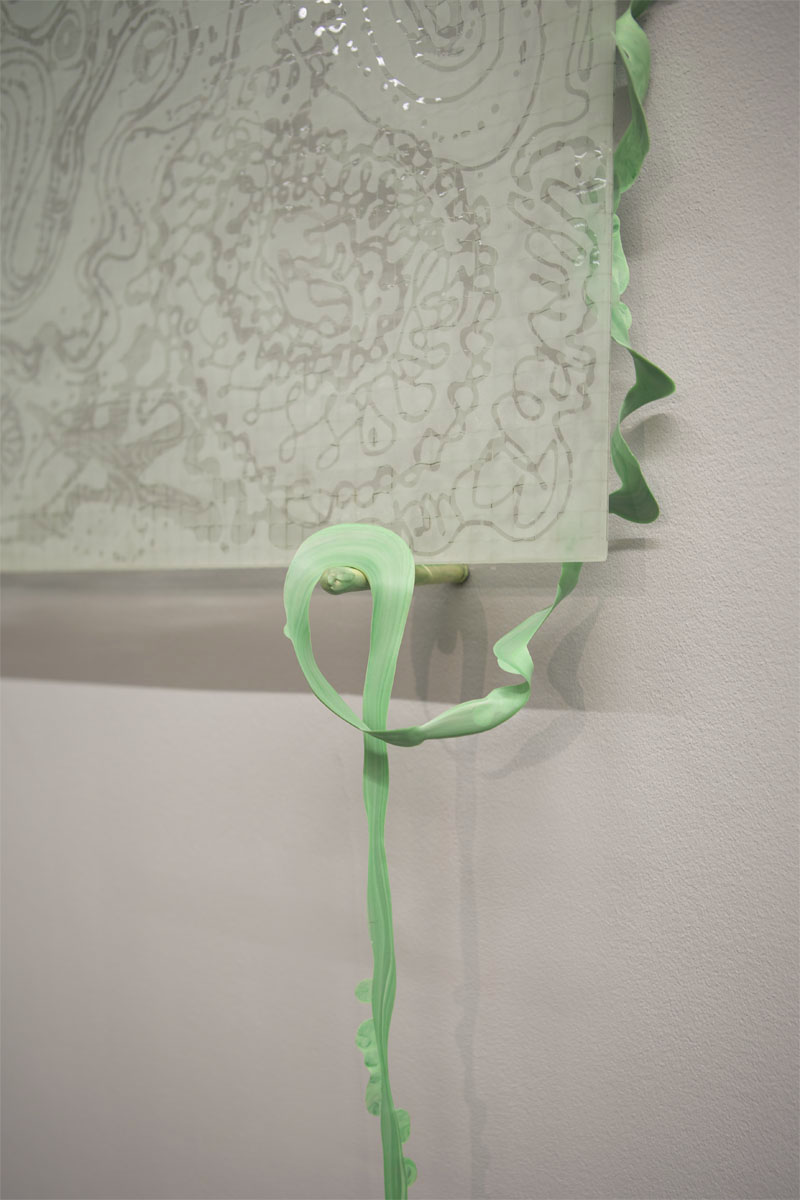Bauhaus Octopus X
Ulrike Buck at Triumph Gallery Moscow
Exhibition text by Sandra Meireis, architecture theory scholar in Berlin
In the Bauhaus Manifesto Walter Gropius stated that '[a]rchitects, sculptors, painters,
[…] all must return to craftsmanship! […] There is no essential difference between
the artist and the artisan. The artist is an exalted artisan. Merciful heaven, in rare moments
of illumination beyond man's will, may allow art to blossom from the work of
his hand, but the foundations of proficiency are indispensable to every artist' (Weimar,
1919). This expressionist quote bears witness to a disbelief in technology, this
was then in reaction to the unmediated horrors of WWI. Later, in the Principles of
Bauhaus Production (Dessau, 1926) Gropius departed from the Arts & Crafts credo
and pleaded for strong unity with technology, incorporating industrial progress into
the school's design thinking. As a result, the Bauhaus movements' approach to democratic
design has made global history as a German export hit; in its spirit, other design
schools came into being and multinational corporations spread ready-to-assemble furniture
all over the world. It is also the name giver to a German self-service hardware
store, founded in 1960. This was during the early days of the digital revolution, paralleled
by the rise of DIY culture in the Western world. Thus a certain utopian idea
from the early 20th century has successfully descended into today's reality.
Here, the choice of classic building materials, like terracotta, (wire enforced)
glass and steel, predetermine the set of possibilities for the shaping and emergence of
new objects. The utopian character of traditional crafting encounters the contemporary
living conditions of a digital nomad. Material knowledge is used as an essential
precondition for thinking with and creating through the body and hands, understood
as a sensory extension of the artist's mind – a significant anthropological constant
throughout human history.
Also Octopus vulgaris – one of the oldest living creatures – literally thinks
with its arms: Each of its eight tentacles is equipped with a cloud of neurons that
builds-up different brain fields. Belonging to the Cephalopod species, this softbodied
sea animal emerged in the history of evolution 550 Million years ago, on the cusp
of the Cambrian. Since then the octopus is a mediator between worlds, communicating
between the shallow seawater and the deep sea, one of the most unexplored
and pristine territories on Planet Earth and symbolic of the human subconsciousness.
This solitary animal is a maverick, endowed with three hearts, reason, memory, and
personality. It is capable of camouflaging itself, adapting not only its skin colour and
texture, but also its body shape and behaviour; a complex organism with no clear
brainbody boundary. Diving into its habitat is like diving into the origin of us all,
as Peter Godfrey Smith recently put in his book Other Minds. The Octopus, the Sea
and the Deep Origins of Consciousness (New York, 2016), in which the author tries
to assess their intelligence and challenges science to re-frame its understanding of the
human brains. Correspondingly, the octopus has become an object of investigation in
recent developments in robotics.
The symbolism of the octopus is manifold. Its overall gestalt, its shape and
character is soft and fluid. Lined with countless suction cups, the ceaseless movement
of the intangible tentacles embraces the observer with its mystical, and possibly lethal
beauty. Throughout art history, the octopus conveys indefinite erotic imaginaries, for
instance, in The Dream of the Fisherman's Wife, a woodblock print by the Japanese
artist Hokusai (1814). Thus, it can be interpreted as an allegory of female dreaming,
representing an embodiment of the stream of consciousness method; reactive, intuitive,
associative, and of a sensuousrational nature. Not least, it is said, that the tentacles
motif has been inspirational for the characteristic design of the ancient Minoan
labyrinth. This is one of the most legendary architectural structures in Greek mythology,
keeping the Minotaur imprisoned and proving Ariadne's ingenuity.
The symbol X is universal. Although it is frequently used to indicate a concept
of negation, refusing, dividing, or terminating something; it has much more power
as a positive sign: Primarily it symbolizes the union of two things, expresses their
interconnectedness, or multiplication, lately used in netspeak as symbol for kissing.
It is an indicator, identifier, mark or placeholder, often representing the unknown,
e.g. locating the final destination on a map, where the treasure is buried. Altogether
X stands for the crossing of boundaries, as it is the ancient symbol for change and
transformation. It is also Osiris' symbol, the Egyptian god of the afterlife, and underworld,
the god of resurrection. In pagan belief, witches cross fingers to focus and hold
magical or demonic energy at the point of intersection. This was thought to mark a
concentration of good spirits and served to anchor a wish until it could come true. In
genetics, without the X-chromosome there's hardly life, and the double X designates
the female cell. Not least, the X axis represents the horizontal in the coordinate system.
In the exhibition Bauhaus Octopus X, the X also stands for the multiple interconnections
and mutual enhancement of the material when combined with artistic energy.
The pieces are corpora delicti of a specific moment in time, historically and
biographically, a synthesis of the artist's personal anthropological archive. Aesthetically
the objects amalgamate the ascetic, functionalist Bauhaus style with a postmodern
idea of a networked world-organism. The deployed technologies, such as
sandblasting, iron bending, and clay firing, correspond to the classical elements earth,
wind, and fire, and hence convey an archaic understanding of the world, when senses
were essential for survival. As in Plato's Timaeus (360 BC) where the creation of the
world's soul is manifested in the letter X.
Installation view, Bauhaus Octopus X, Triumph Gallery Moscow 2017
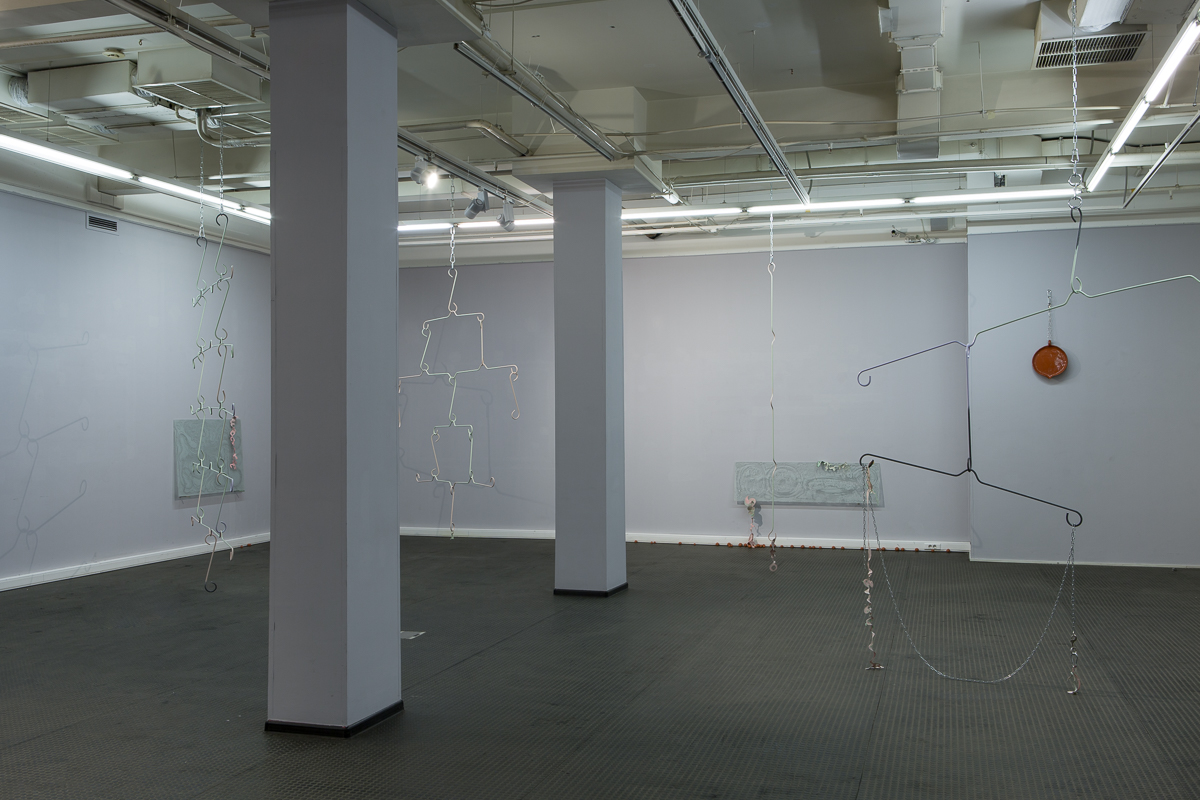 Baushaus Octopus X installation view, Triumph Gallery Moscow 2017
Baushaus Octopus X installation view, Triumph Gallery Moscow 2017
Installation detail with seal. Glazed ceramic, sand blasted wire glass, steel, latex, carpet.
Molluscs
Transparently glazed red ceramics on found rug from russian tool store (150x150 cm)
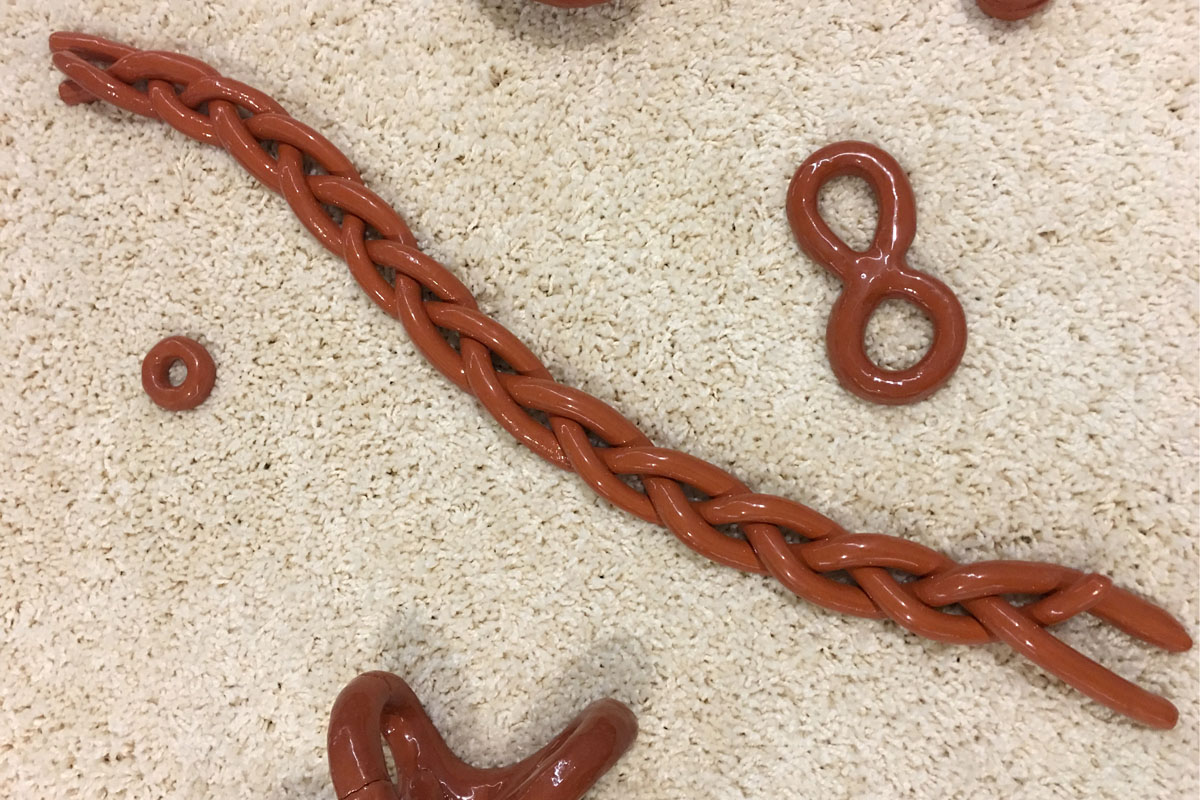
Molluscs (detail)
Transparently glazed red ceramics on found rug from russian tool store (150x150 cm)
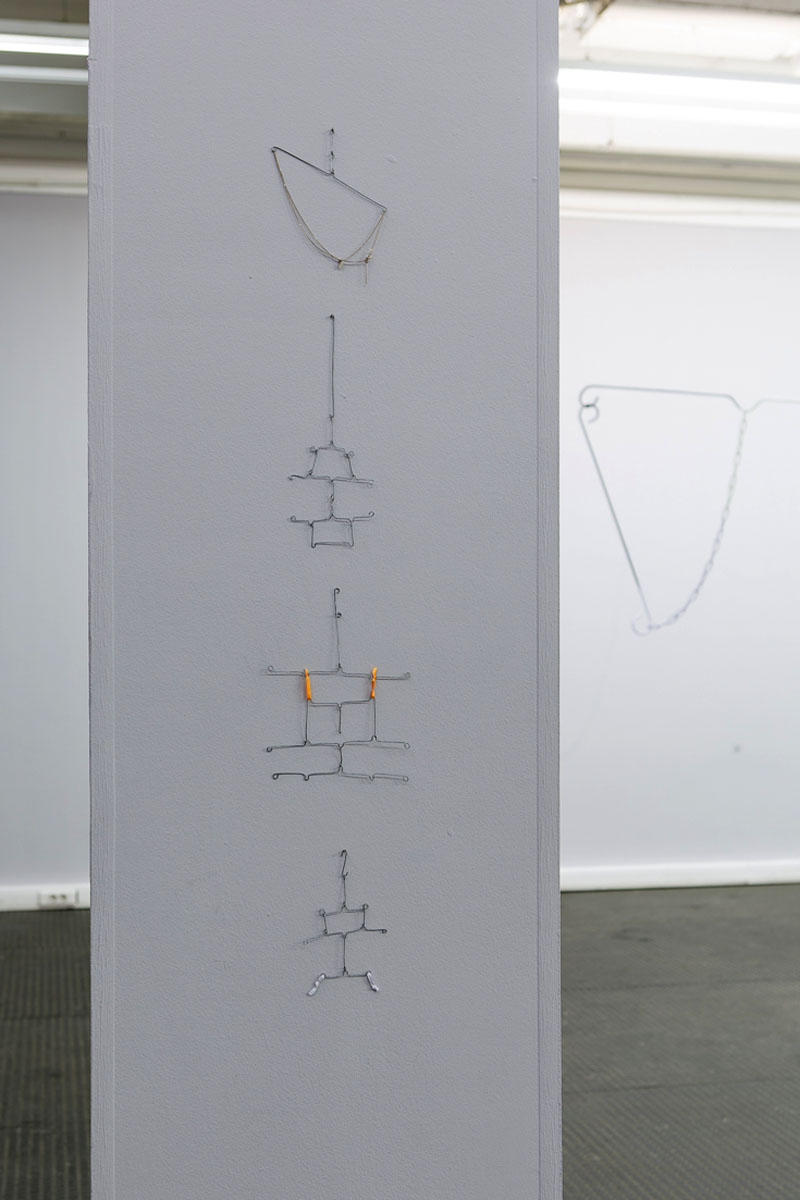
wire models for suspension sculptures
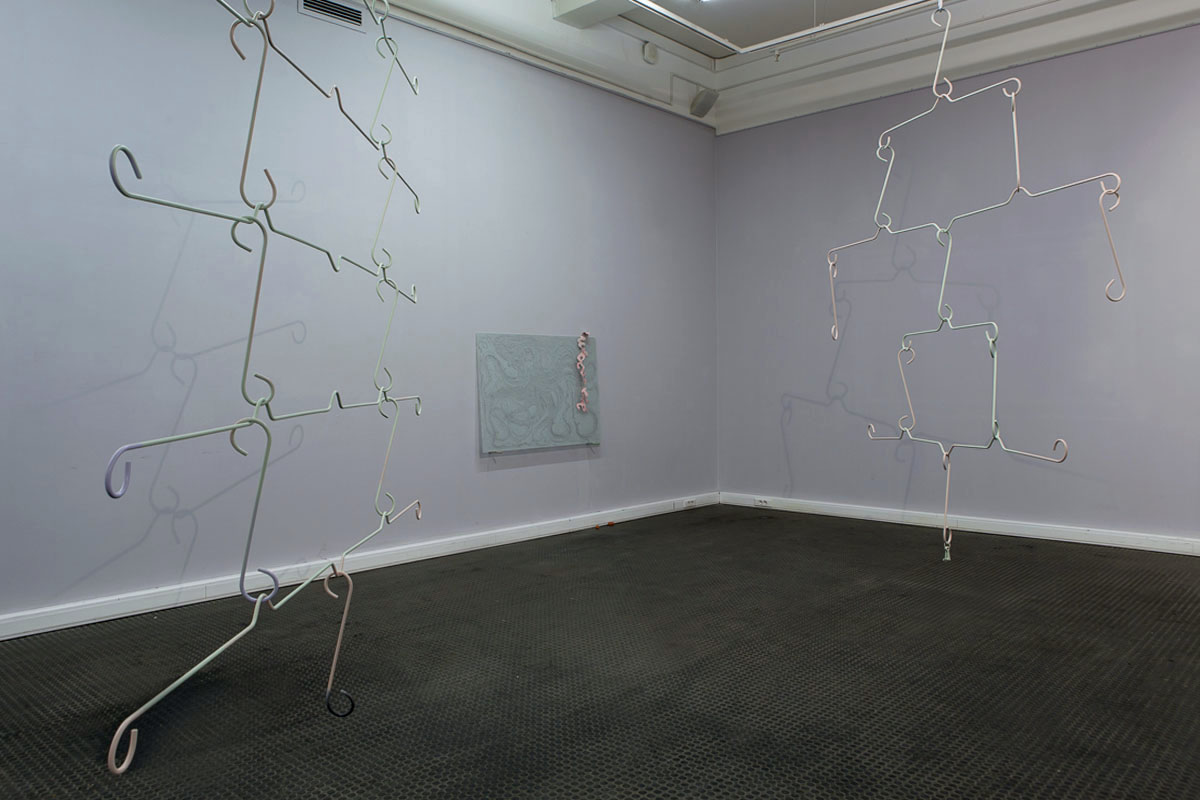
Bauhaus Octopus X, installation view.
Suspensions, hand bent steel rods, latex calligraphy, chains
background: Autoerotic, sandblasted octopus painting on wire enforced glass with latex calligraphy
2017
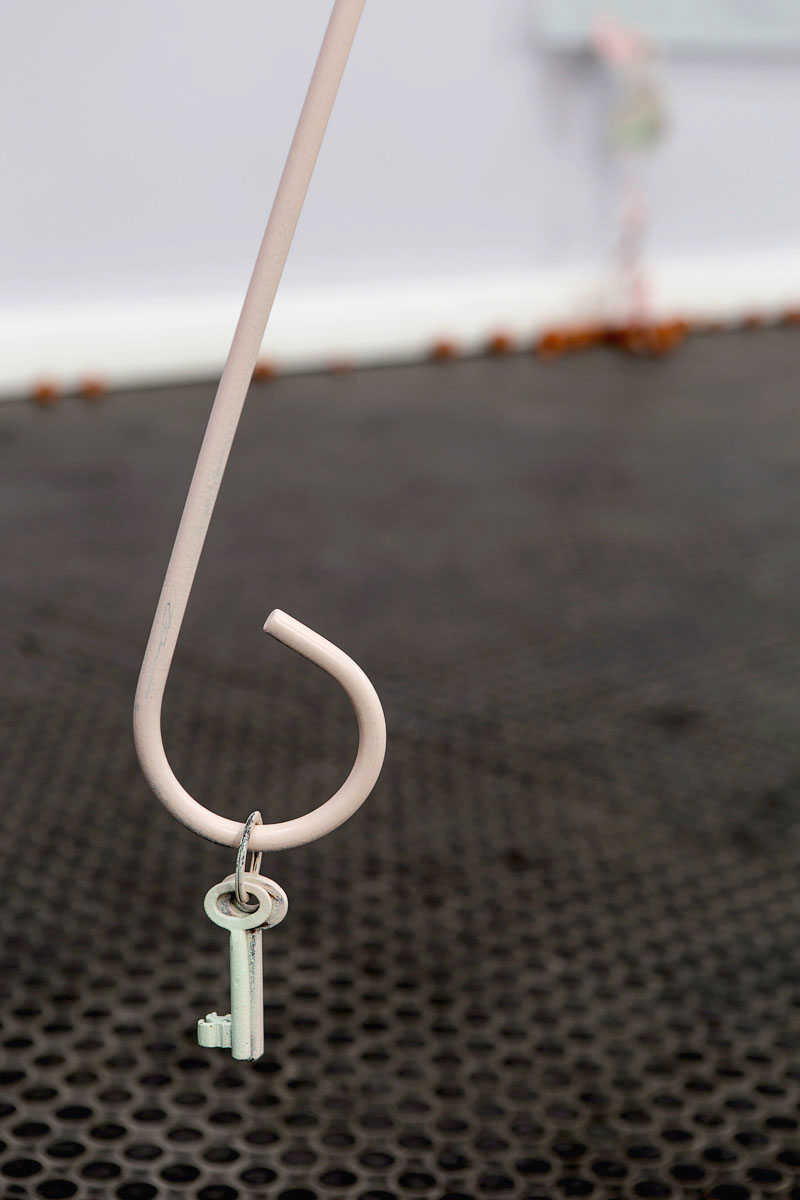
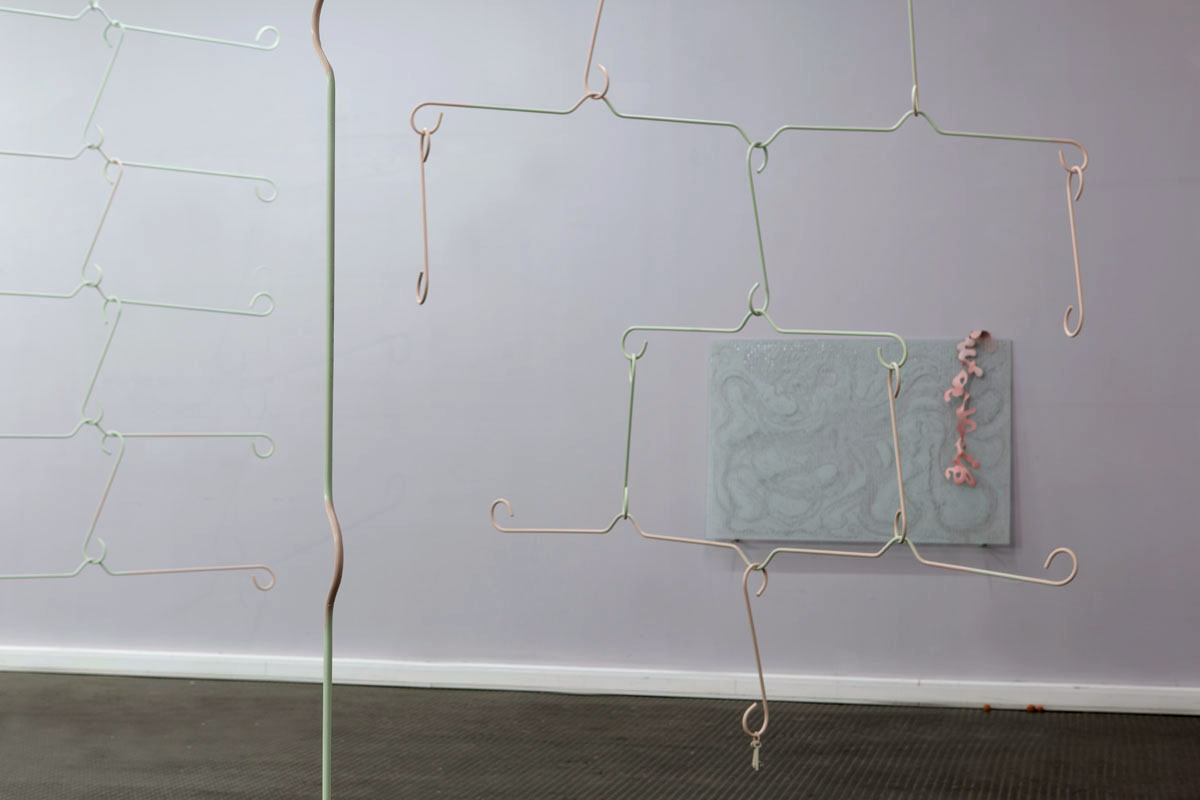
Bauhaus Octopus X, installation view. Hand bent steel rods, latex calligraphy, chains
background: Autoerotic, sandblasted octopus painting on wire enforced glass with latex calligraphy
2017
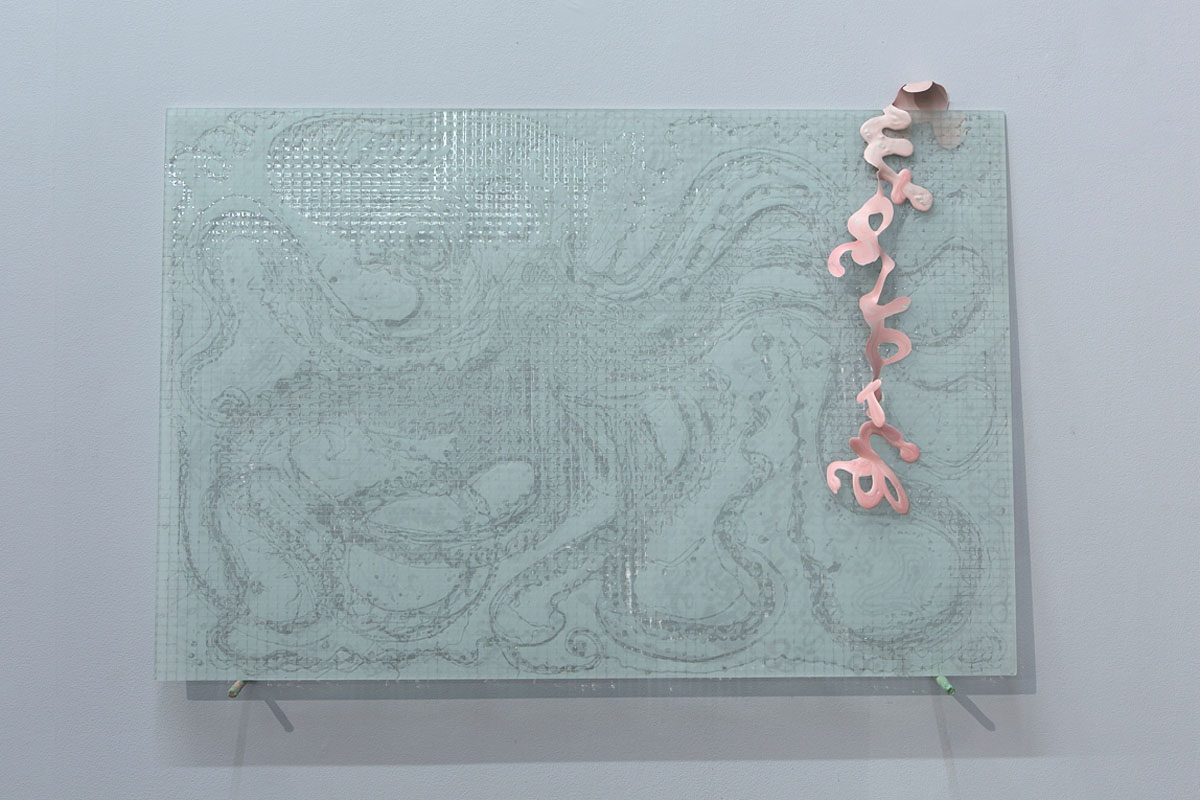
Autoerotik
latex calligraphy and sandblasted painting on steel enforced glass, 2017
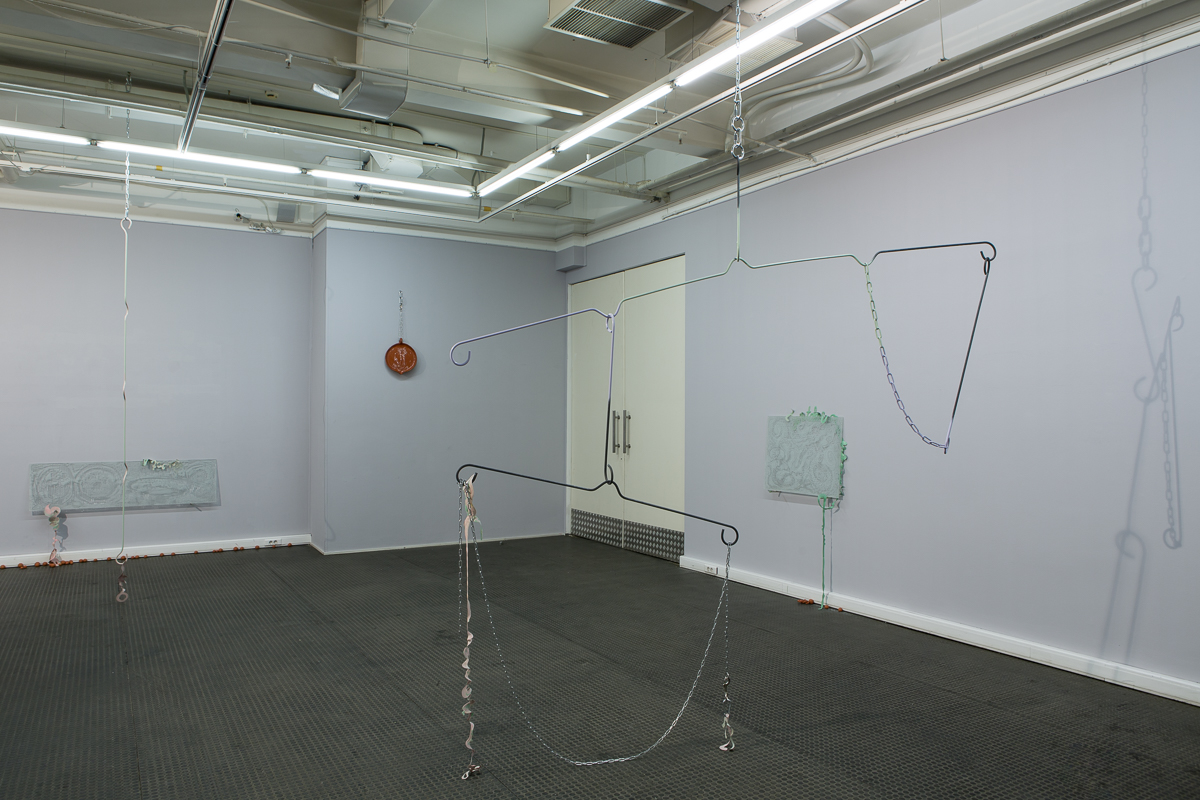
Bauhaus Octopus X, installation view, hand bent steel rods, latex calligraphy, chains
background: Tentaclelove, sandblasted painting on wire enforced glass with latex calligraphy
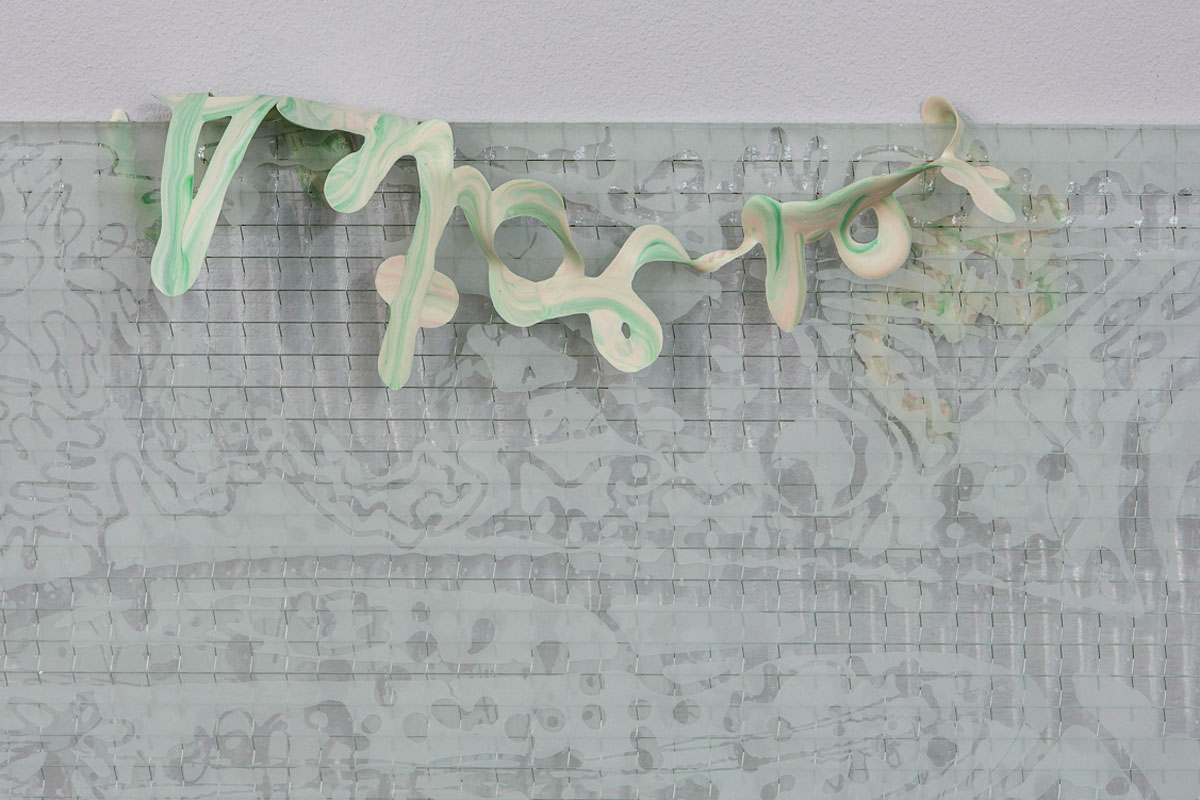 Bauhaus Octopus X material detail. Autoerotic latex calligraphy, sand blasted painting on steel enforced glass, 2017
Bauhaus Octopus X material detail. Autoerotic latex calligraphy, sand blasted painting on steel enforced glass, 2017
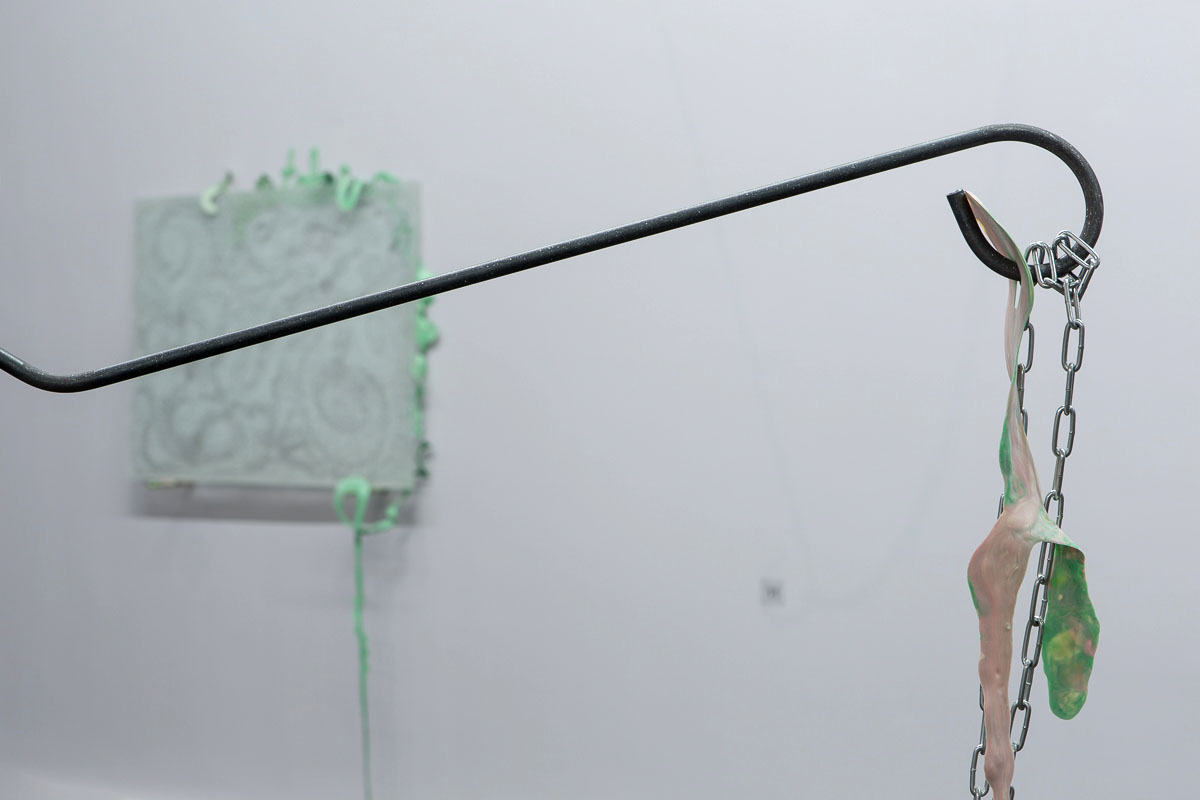
Bauhaus Octopus X, installaton detail, hand bent steel rods, latex calligraphy, chains
background: Tentaclelove, sandblasted painting on wire enforced glass with latex calligraphy
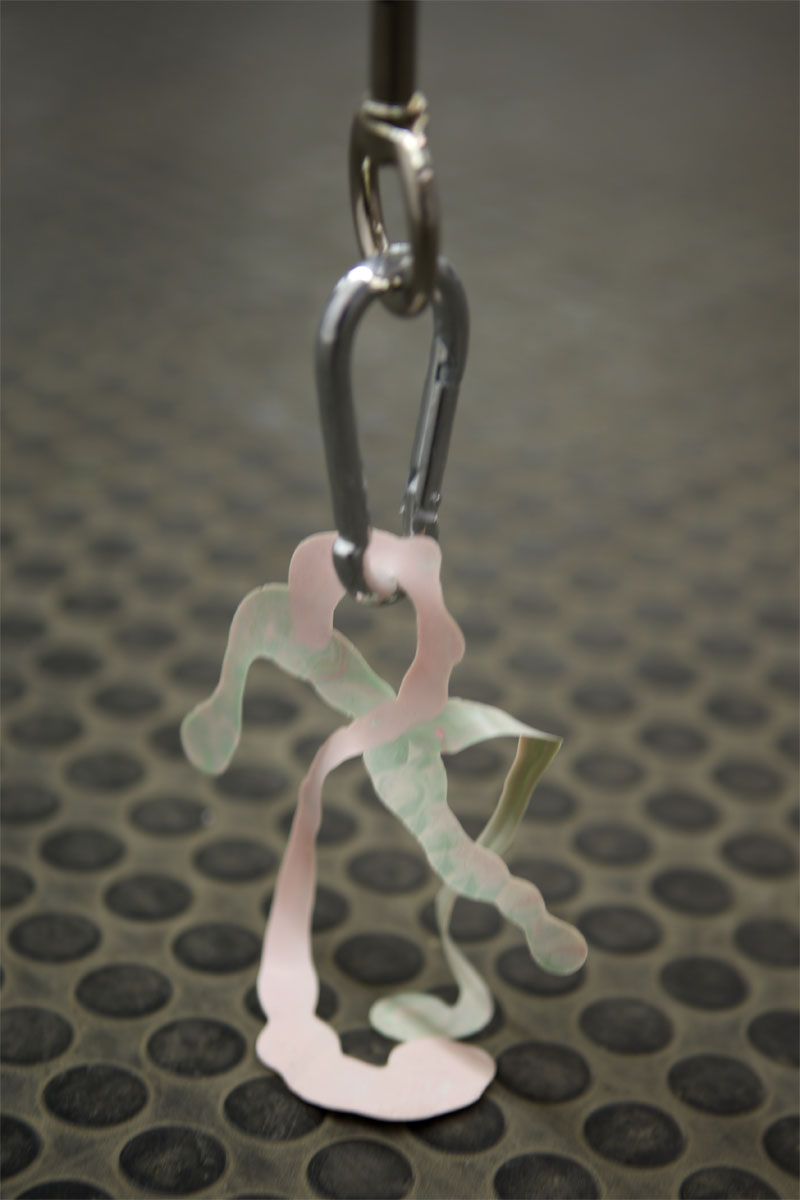
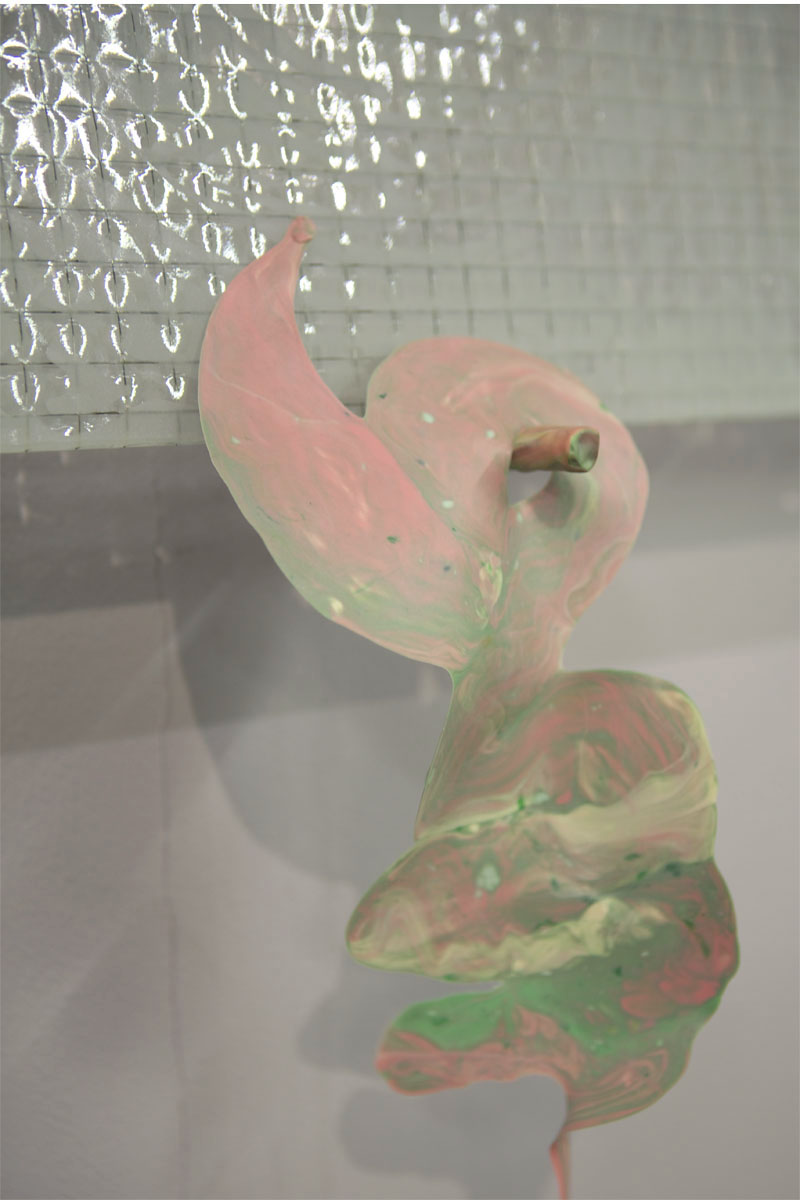
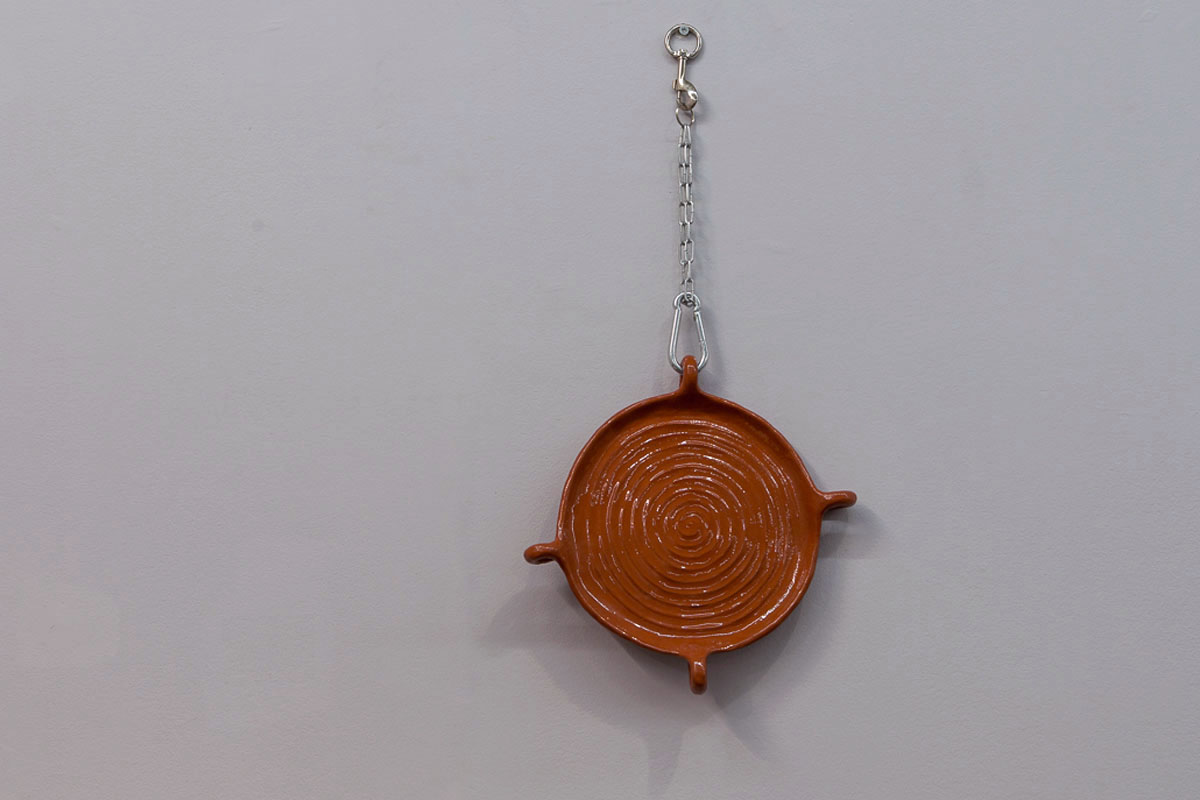
Compass
glazed ceramic, metal works from the tool store, 2017
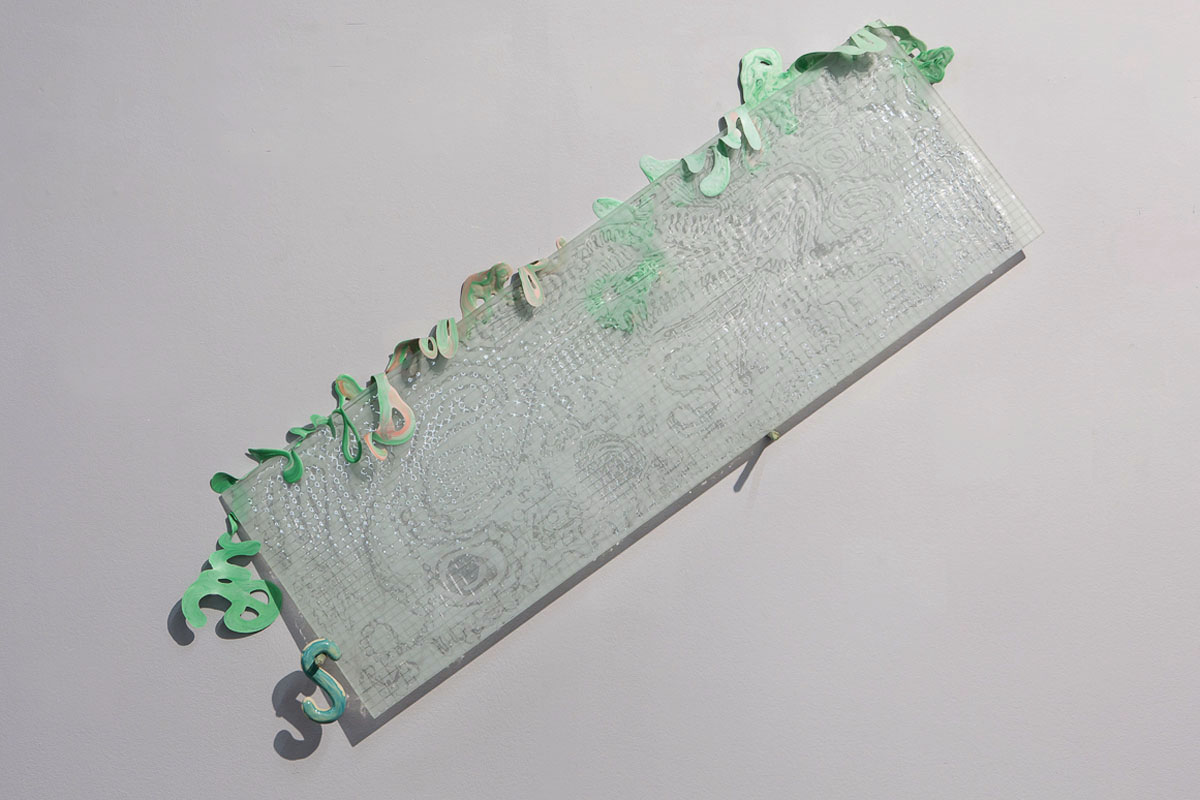
Tentacle Love. Latex calligraphy, sand-blasted painting on steel enforced glass, latex coated steel rods for wall mounting, glazed ceramic hook. 2017
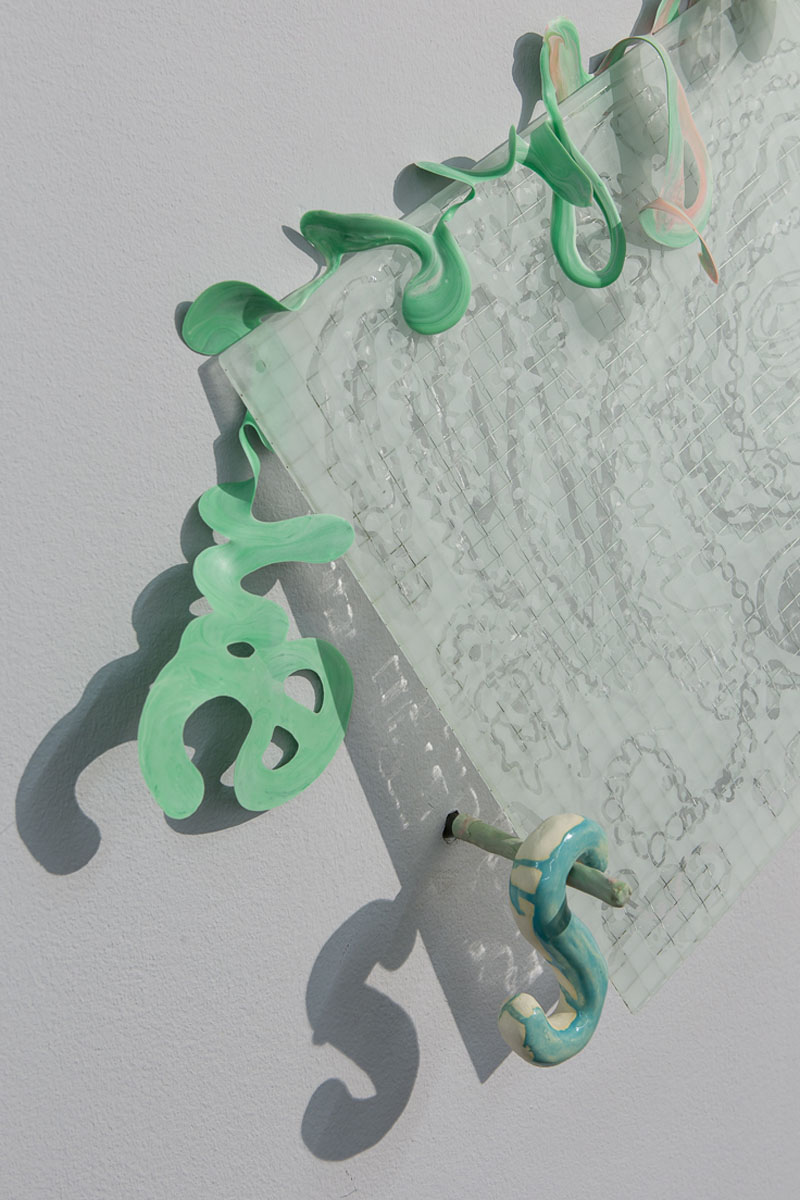
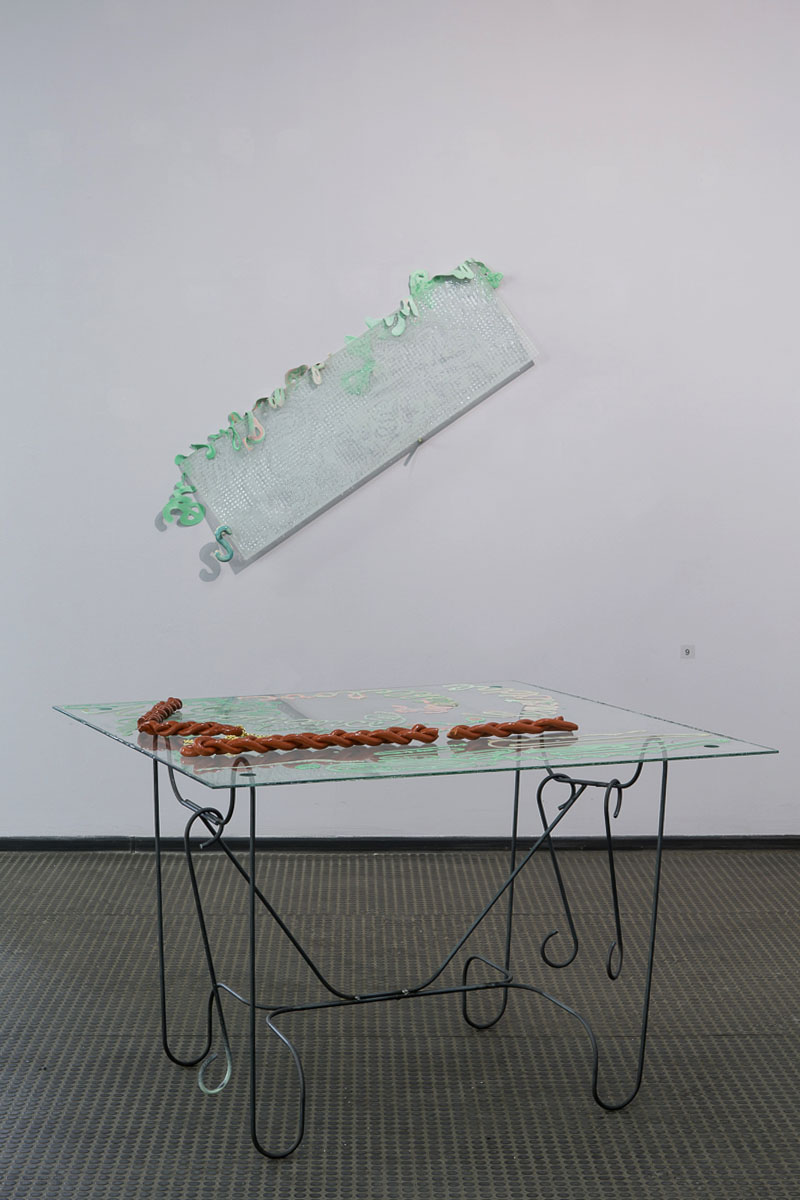
Neuromance Table
bent and welded steel rods, found glass, latex calligraphy, ceramic braids, 2017
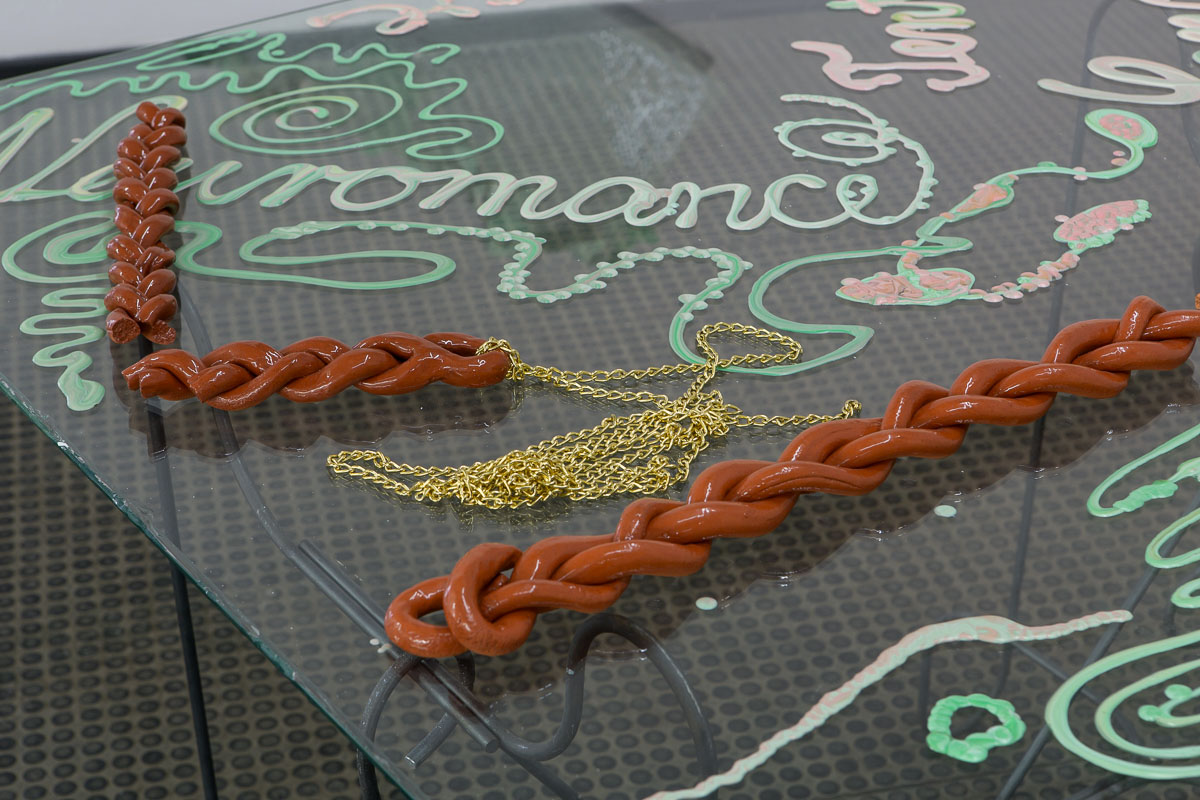
Ulrike Buck curated by Marina Bobyleva
|
